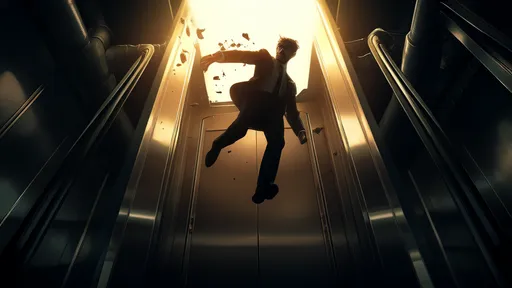The idea of jumping at the exact moment an elevator plummets to the ground has long been a topic of debate and curiosity. Many wonder if this action could potentially save a life by counteracting the deadly impact. While it may sound plausible in theory, a deeper dive into the physics behind free-falling objects and human reflexes reveals a far more complex reality.
The Physics of Free Fall
When an elevator begins to fall, both the cabin and its occupants accelerate downward due to gravity. In a true free-fall scenario—where the elevator’s cables snap and safety mechanisms fail—the speed increases at approximately 9.8 meters per second squared. This means that within seconds, the elevator reaches velocities that make survival upon impact nearly impossible.
The concept of jumping hinges on the idea of reducing relative velocity. If a person could jump upward with enough force at the exact moment of impact, theoretically, they might neutralize some of the downward momentum. However, the human body is incapable of generating the necessary force to make a meaningful difference. Even an Olympic-level jumper can only exert enough force to briefly reduce their speed by a fraction of the elevator’s terminal velocity.
Timing and Human Reflexes
Another critical factor is timing. The window for executing a perfect jump is impossibly narrow. Humans rely on visual and auditory cues to react, but in a free-falling elevator, there are often no clear signals before impact. Even if someone could anticipate the exact moment, nerve signals take milliseconds to travel from the brain to the muscles, introducing a delay that makes precise timing unfeasible.
Moreover, the force required to jump effectively would demand a stable surface to push against. In a falling elevator, the floor is also accelerating downward, reducing the leverage a person has to propel themselves upward. This further diminishes any potential benefit from attempting to jump.
The Reality of Impact Forces
Surviving an elevator crash isn’t just about speed—it’s about the sudden deceleration upon impact. When the elevator hits the ground, the change in velocity happens in milliseconds, subjecting the body to extreme g-forces. Bones, organs, and tissues are not designed to withstand such rapid deceleration, often leading to fatal injuries regardless of any last-moment maneuvers.
Studies on free-fall impacts suggest that even a fall from a few stories can be lethal. Elevators typically travel much greater distances, compounding the force exerted on the body. Jumping might slightly alter the dynamics, but it would not mitigate the overwhelming energy of the collision.
Myth vs. Practical Survival Strategies
While the jumping theory is intriguing, practical survival strategies focus on minimizing injury rather than attempting impossible physics feats. Lying flat on the floor can distribute impact forces more evenly, reducing the risk of concentrated trauma. Holding onto handrails or bracing against walls may also help stabilize the body during a fall.
Modern elevators are equipped with multiple safety mechanisms, such as braking systems and shock absorbers, designed to prevent free-fall scenarios altogether. Regular maintenance and safety inspections further reduce the already minuscule likelihood of such an event occurring.
Conclusion: A Thought Experiment with No Real-World Benefit
In the end, the idea of jumping to survive an elevator crash remains a fascinating but impractical thought experiment. The laws of physics and human biological limitations make it an unviable solution. Instead, awareness of elevator safety features and adherence to maintenance protocols offer far more reliable protection against such rare disasters.

By /Jun 7, 2025

By /Jun 7, 2025

By /Jun 7, 2025

By /Jun 7, 2025

By /Jun 7, 2025

By /Jun 7, 2025

By /Jun 7, 2025

By /Jun 7, 2025

By /Jun 7, 2025

By /Jun 7, 2025

By /Jun 7, 2025

By /Jun 7, 2025

By /Jun 7, 2025

By /Jun 7, 2025

By /Jun 7, 2025

By /Jun 7, 2025

By /Jun 7, 2025

By /Jun 7, 2025

By /Jun 7, 2025

By /Jun 7, 2025